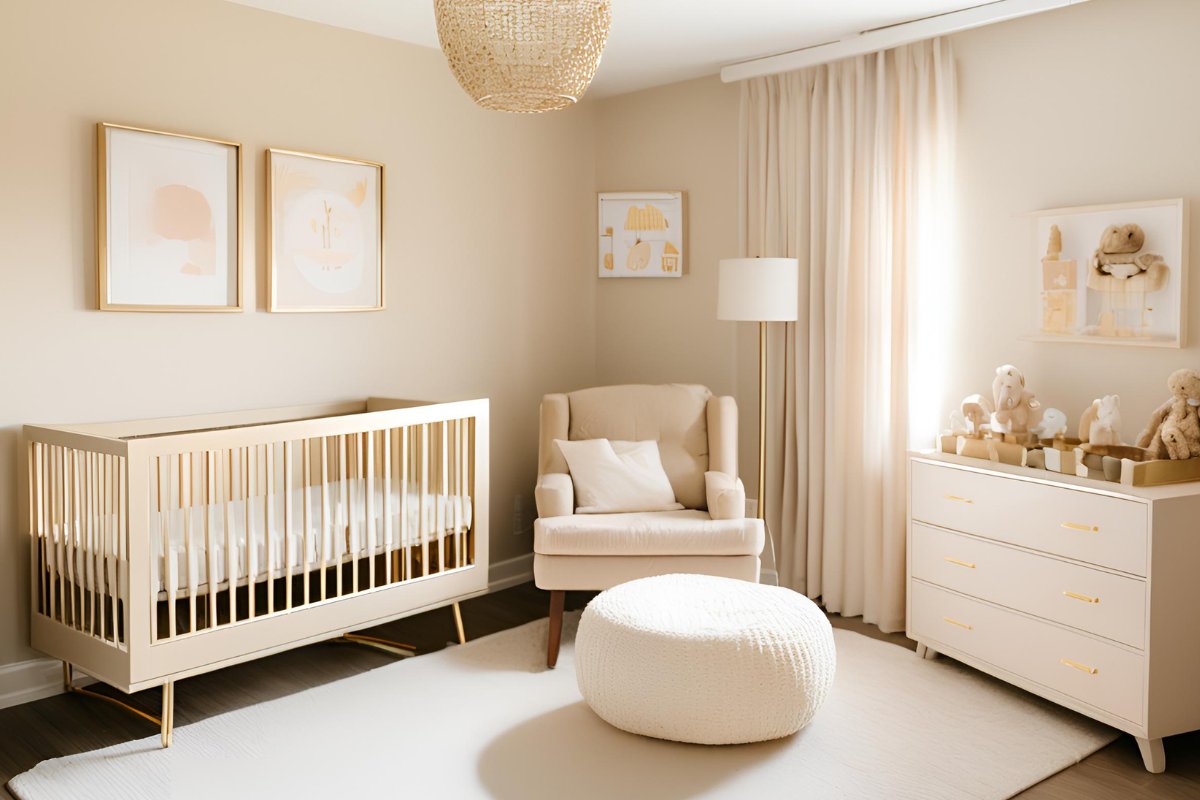The 6 Best Neutral Nursery Paint Colors for Your Baby
Designing a nursery is one of the many exciting parts of preparing for your baby’s arrival.
Among the many decisions to make, choosing the right colors can feel particularly significant. Gender-neutral colors have become increasingly popular, not just for their versatility but also for their ability to create a serene and welcoming environment.
In this article, we'll guide you through the best gender-neutral colors for your nursery, helping you craft a space that feels cozy, inviting, and perfect for your little one!
6 Neutral Paint Colors for Nursery
Can't wait to see our list? Here are the best gender-neutral paint colors for your baby's nursery.
1. Warm Beiges and Creams
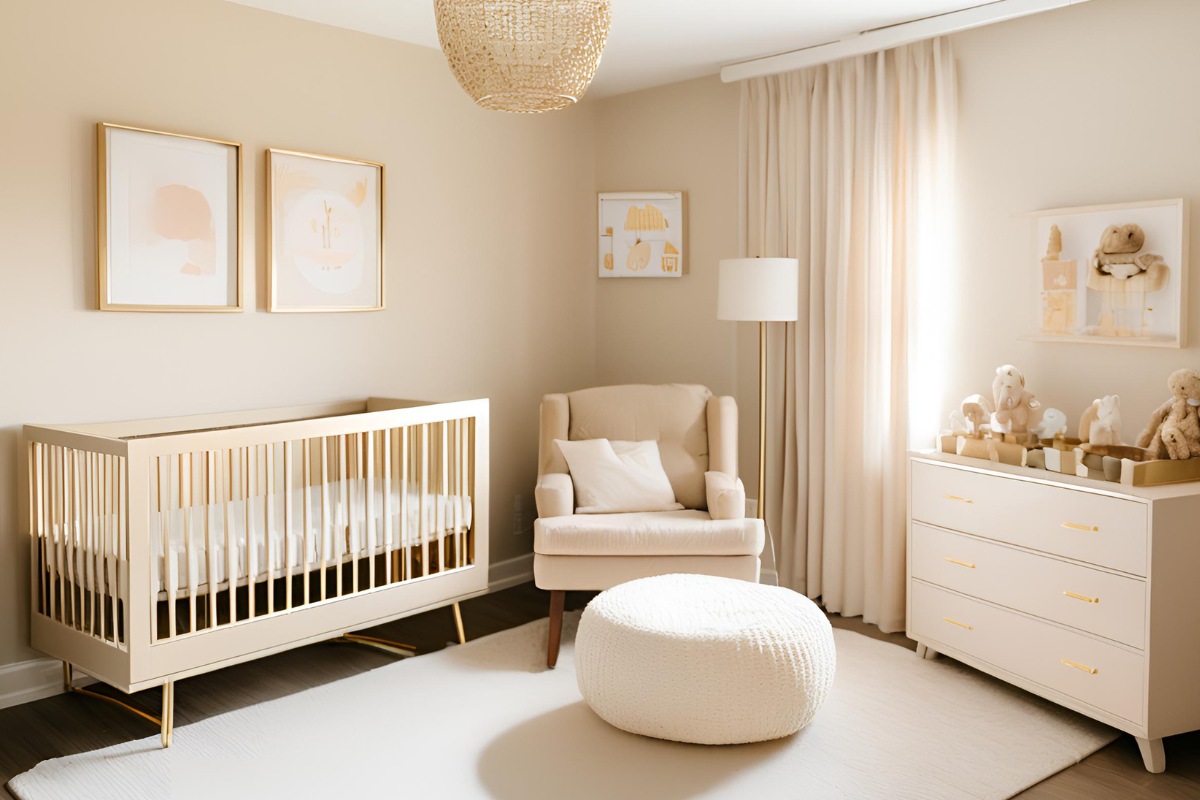
Warm beiges and creams are classic choices for a baby nursery. Even if you weren't specifically looking for a neutral paint color, they're still arguably some of the best nursery paint colors out there.
Not that it's a surprise, since they're known to create a timeless and cozy atmosphere that fits basically anything -- including your baby's room.
Soft beige or cream hues are perfect for either baby girl's nursery or a baby boy's nursery, offering a versatile backdrop that grows with your child. You can pair them with wooden furniture and gold accents to create a warm and inviting space.
Also, beige tones work wonderfully with natural light, as they can enhance the room's airy feel without being overwhelming.
That said, as you probably already know from the recent trend of "sad beige moms" on social media, it's also important to keep it balanced. Having everything in one color isn't good for your baby room either.
Babies need exposure to a range of colors to develop their visual abilities properly. So, you need to strike a balance and add pops of color to keep the room lively and your baby stimulated.
2. Muted Grays
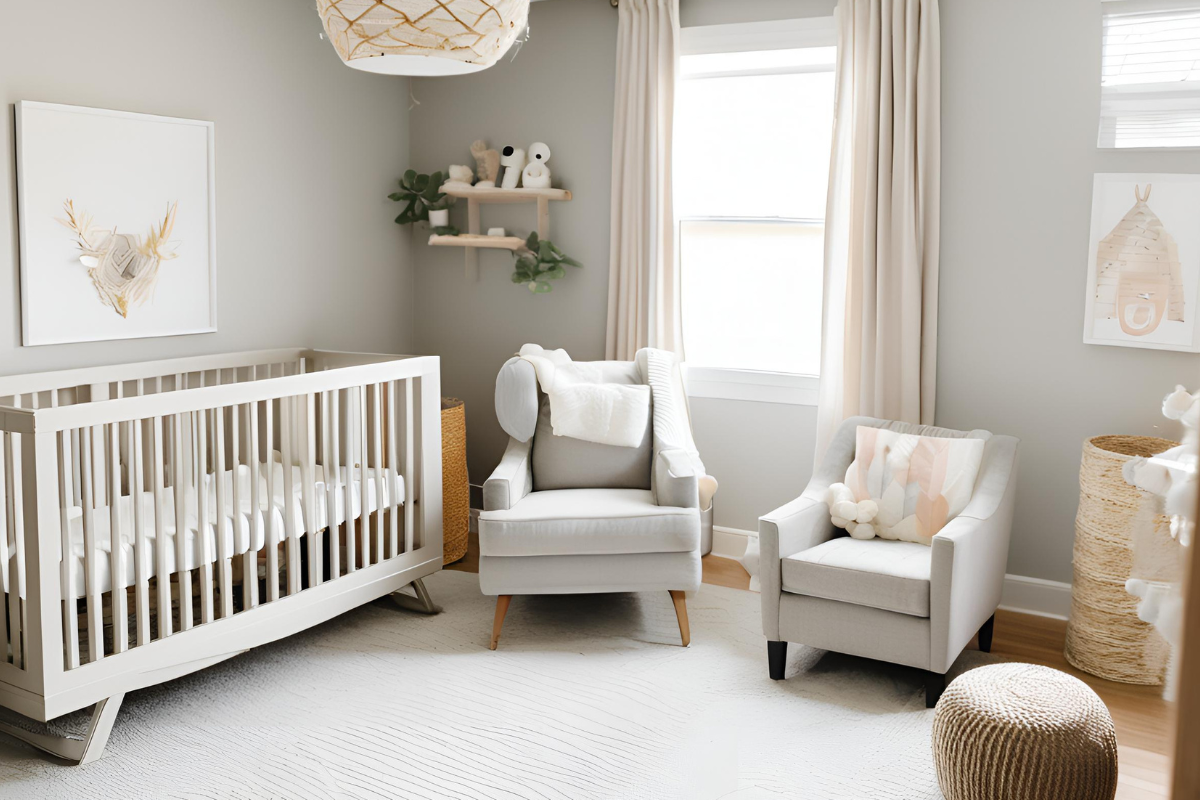
Soft grays are another perfect neutral paint color for nurseries.
This classic color inspires a calm and soothing environment, perfect for helping your baby drift off into sweet dreams. This neutral paint color is versatile enough to match various nursery decor styles, from modern to classic.
A light gray accent wall can add depth without making the room feel too cold. You can also pair soft gray walls with white furniture and colorful, playful decorations to keep the room inviting and cheerful.
Like with grays, natural light also plays beautifully with soft grays, creating an airy space.
3. Gentle Greens
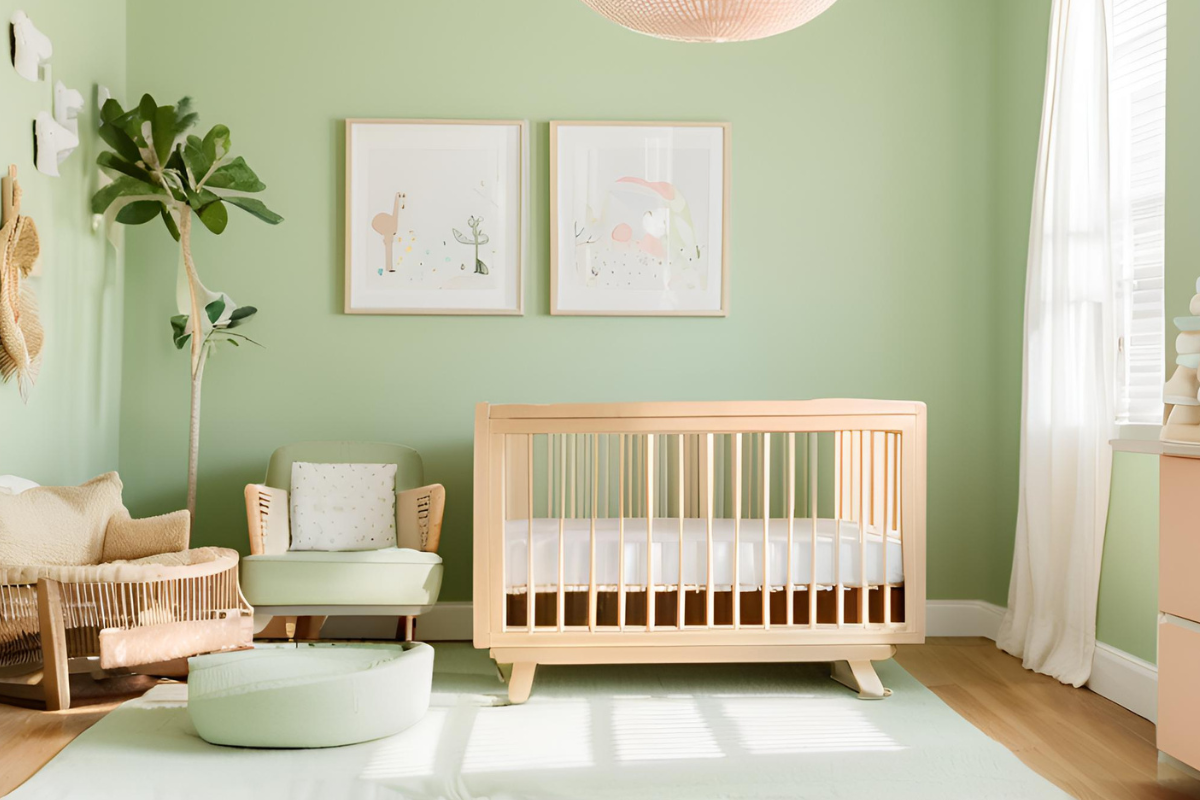
Gentle greens bring a touch of nature into your baby's room, promoting tranquility and a soothing atmosphere.
This color is ideal for creating a gender-neutral space, as it works well for both a baby girl's nursery and a baby boy's nursery.
Gentle greens can be complemented with white walls or wooden accents to create a balanced and peaceful environment.
Adding nature-themed decorations, such as leaf motifs or animal prints, can enhance the serene vibe. This paint color is also perfect for an accent wall, adding a subtle pop of color without being overpowering.
4. Soft Yellows
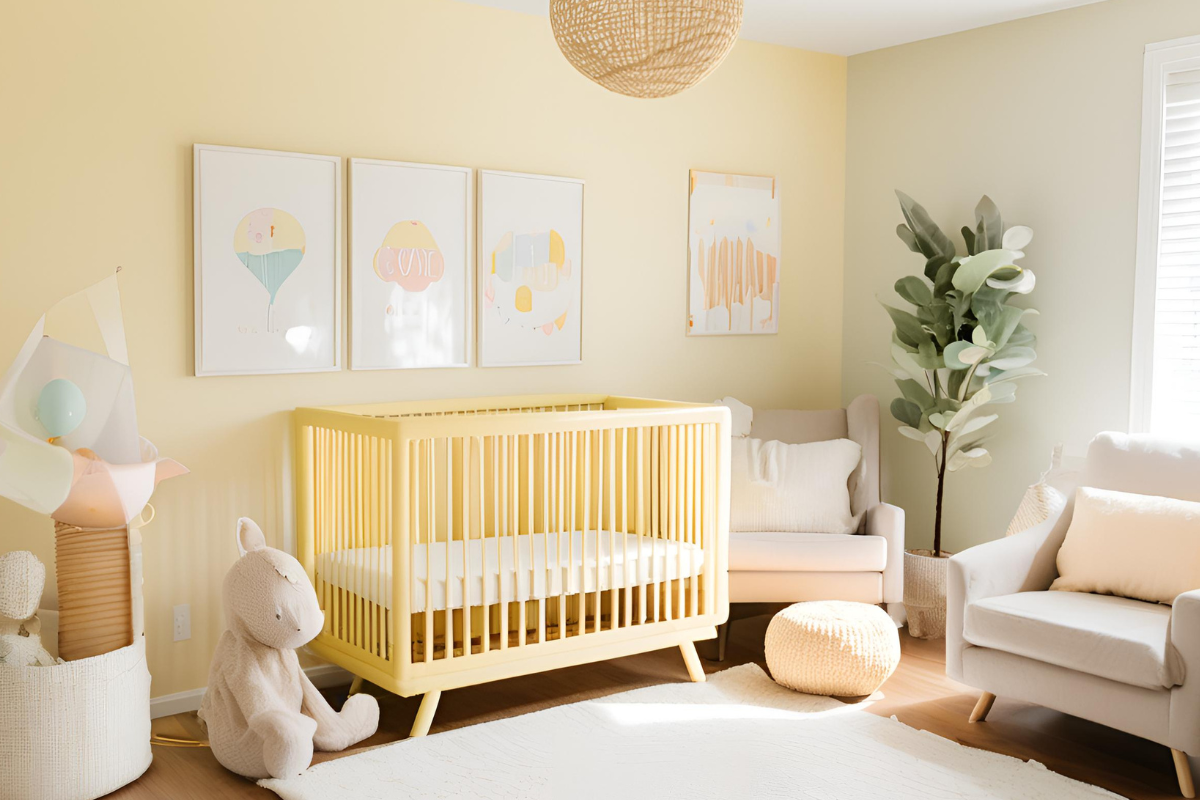
Soft yellow hues offer a cheerful yet calming option for nursery walls. This gender-neutral paint color can brighten up a baby's room while maintaining a soothing atmosphere.
Additionally, muted yellows pair well with white walls and soft pink or blue accents, making them versatile for any nursery design.
Adding gold accents or colorful artwork can enhance the room's warmth and joy. Muted yellows are perfect for creating a welcoming space that fosters happiness and relaxation, making them an excellent choice for your new baby's nursery.
5. Light Blues
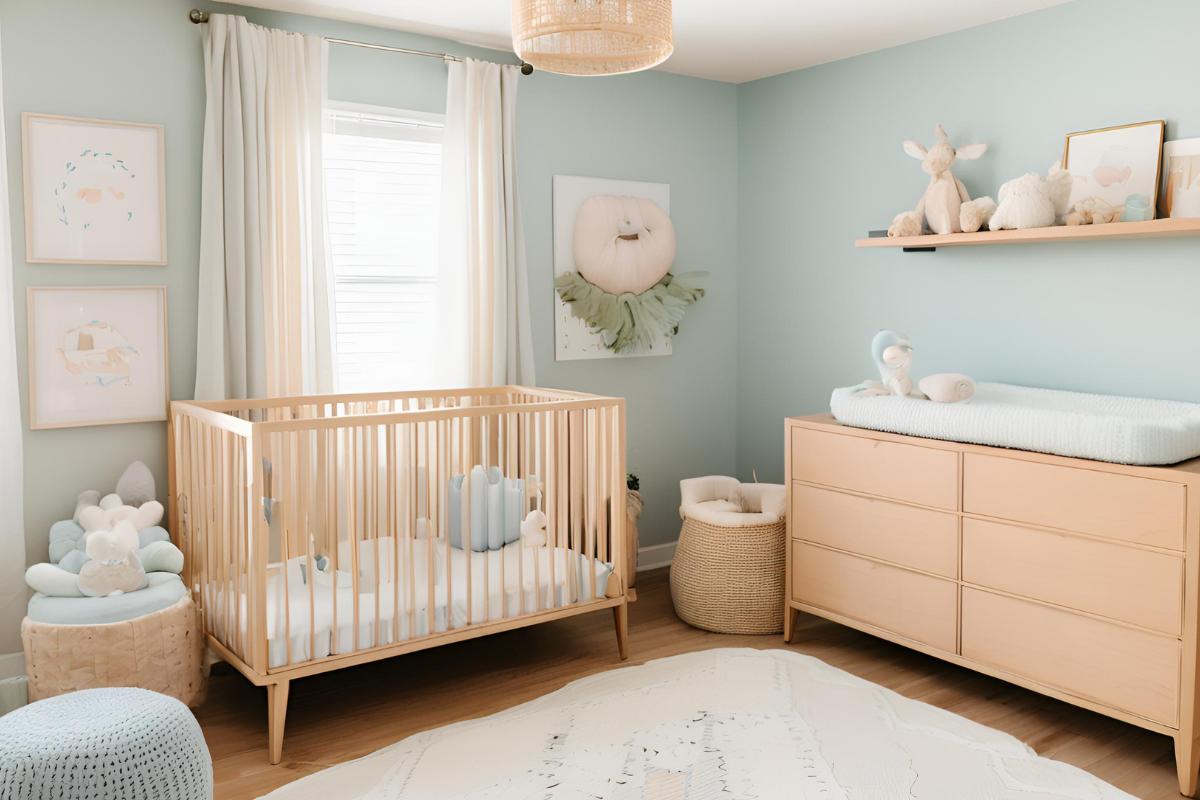
Light blues are refreshing and serene, making them one of the best paint colors for a nursery.
This soothing hue can create a peaceful environment, perfect for a baby girl's nursery or a baby boy's nursery. This color is also great for incorporating nautical or sky-themed nursery decor, particularly if it's sky blue.
In terms of complementary decor, light blue walls pair beautifully with white furniture and contrasting colors like soft pink or muted greens. They work with various lighting conditions, enhancing the room's tranquility and creating an inviting space for both you and your baby.
6. Pure White
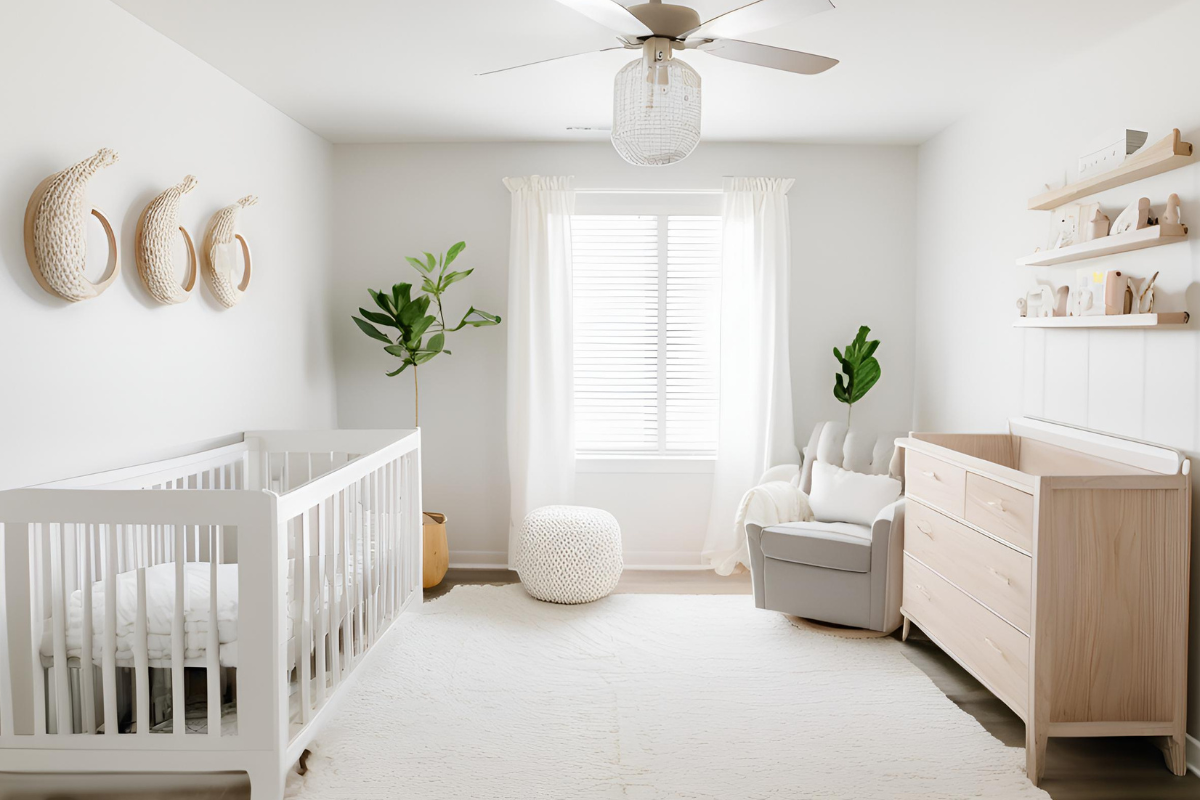
Last but not the least, we've got white, the perfect paint color for a neutral nursery room.
White offers a clean and serene backdrop that can make your baby's nursery feel spacious and bright. It's the perfect canvas to showcase other colorful elements, making sure the room remains engaging for your baby.
Keep in mind that there are many types of white, such as warm white, pure white, off white, and bright white.
Some brands even have their own variation, like the Benjamin Moore Paper White. Feel free to choose whichever you like best since all of them benefit from the neutrality that white provides.
However, just like with beige, it's crucial to incorporate various colorful items, such as vibrant mobiles, patterned rugs, and playful curtains. White isn't enough to stimulate your baby's vision and promote healthy eye development, so you need to incorporate colors to the mix.
Besides, this balance of white and color makes for a beautiful, functional nursery that encourages your baby's development and provides the perfect backdrop for sweet dreams.
Why Nursery Colors Matter
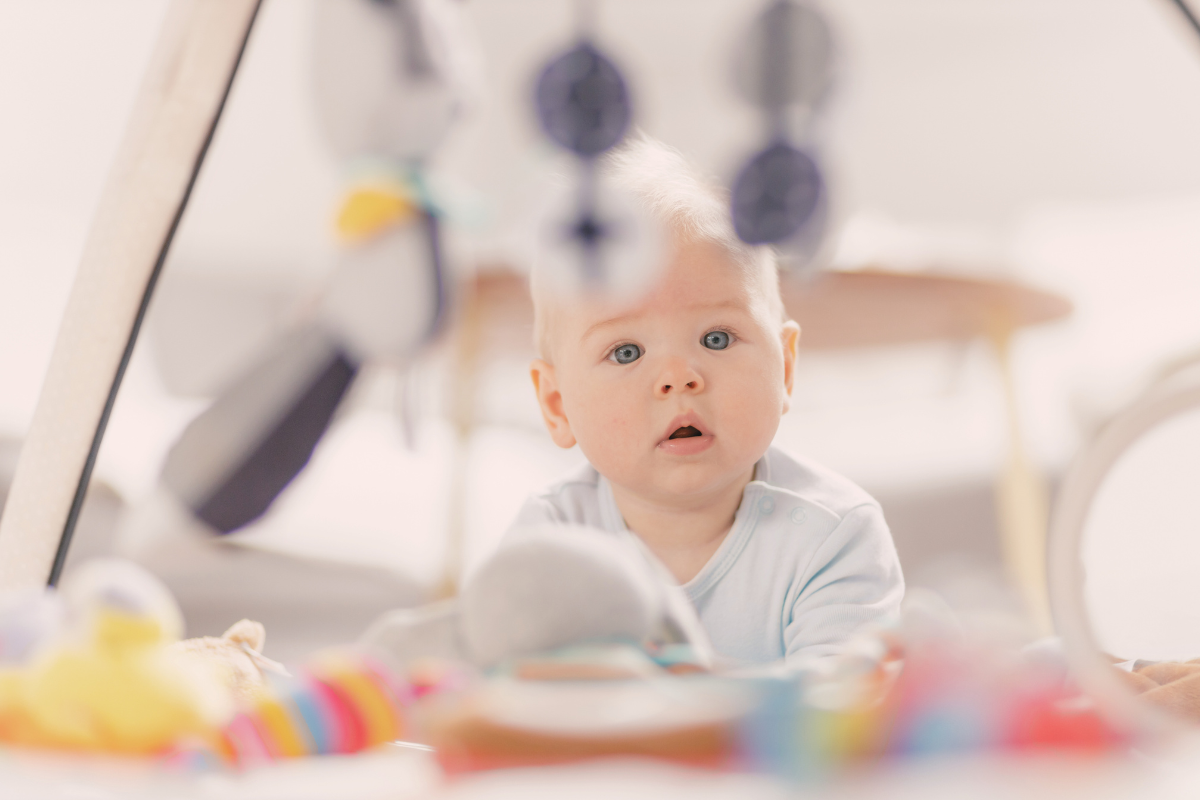
Now you know what the best neutral nursery paint colors are! But contrary to popular belief, choosing the right colors for your nursery is more than just an aesthetic decision. Here's why your choice of nursery paint colors matters beyond aesthetics.
How Color Impacts Child Development
We know, we know. As parents, we've already got so many things to think about. And now we have to think about colors too?
The short answer? Yes, actually.
Colors play a significant role in shaping a child's early experiences. Although it may seem like such a small thing, it can affect their emotional well-being and cognitive growth in the long-run.
Even when it comes to the short-term, the colors surrounding your baby have effects on them as well. For instance, different colors can impact their mood and behavior in different ways.
So, the long answer? Yes, according to science.
The Science Behind Colors and Child Development
Color plays a significant role in early childhood development.
From birth to age three, children's visual systems undergo rapid development.
According to the American Academy of Ophthalmology, the optic nerve, which is crucial for vision, grows significantly during these early years. By the age of three, kids will already have up to 86% of their optic nerves. This means they already have the physical capabilities to see the beauty of colors.
That said, babies start by seeing high-contrast colors like black and white before gradually perceiving a broader spectrum of colors as their vision develops. That's why your baby boy or baby girl nursery needs to have splashes of color -- their vision needs it.
How Colors Affect Behavior and Play
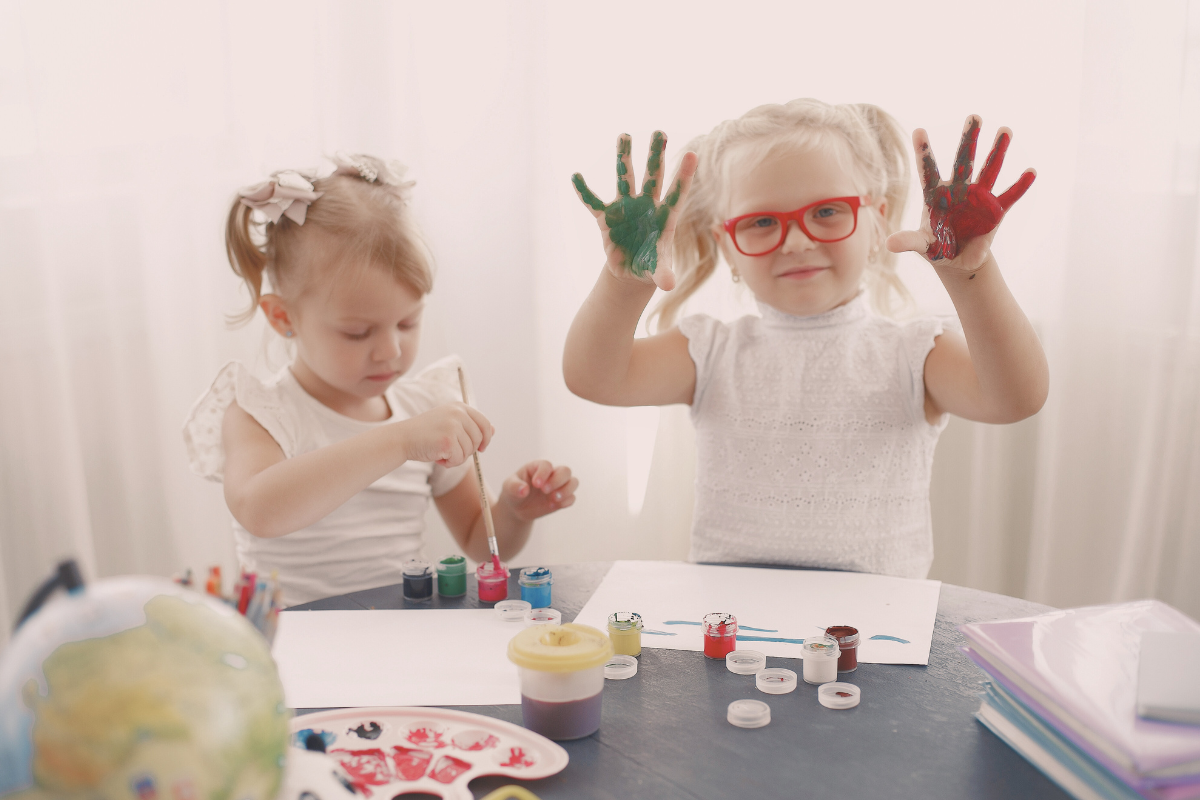
There are numerous studies looking at the effect of colors in children.
For instance, a study published in 2016 highlights how the presence of color in play areas can affect children's behavior.
The study looked at preschoolers aged 3-4 years old and found that highly colorful surfaces, so including bold and vibrant paint colors on play tables and floors, could lead to overstimulation and distractibility. Conversely, more subdued, neutral play areas were associated with better focus and more structured play.
The psychological impact of color extends beyond just behavior; it can also affect emotional well-being.
Research on children's emotional associations with colors reveals that both boys and girls associated a lighter shade with positive emotions. Meanwhile, darker colors evoked mostly negative emotions in girls, but not boys.
These findings aren't unique, either.
A study about the best colors to use in a children's classroom saw that some colors are simply better than others. Blue and green, two colors with cool undertones, were found to elicit positive responses from students. On the other hand, darker, more intense colors like red and brown were seen as negative.
Interestingly, yellow, although considered a positive color, was deemed too exciting for classrooms. This is also why we recommend steering clear of the bold color yellow and stick to the soft or pastel kind.
Why Use Neutral Nursery Paint Colors
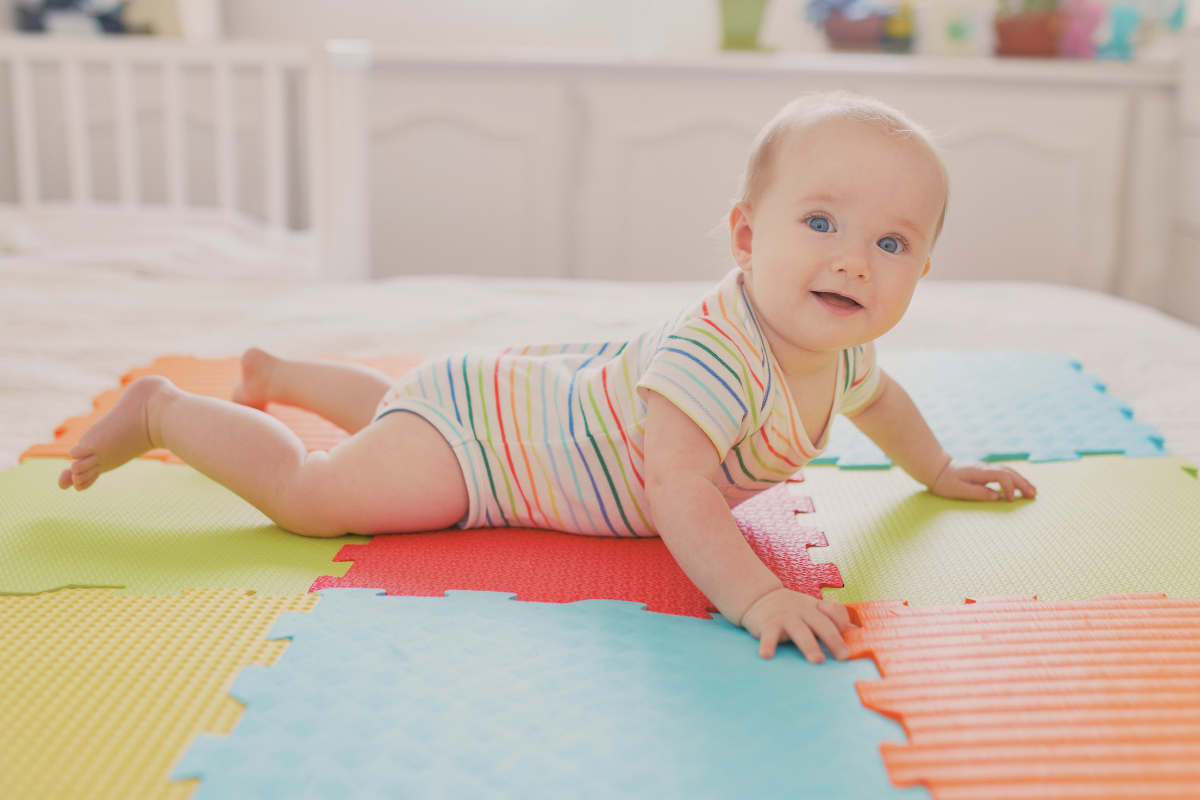
Neutral nursery paint colors offer numerous benefits, making them a popular choice for parents.
-
Creates a cozy atmosphere. Neutral colors make environments feel more serene, which is ideal for a baby’s room where you want everything peaceful.
-
Reduces risk of overstimulation. Neutral tones also reduce the risk of overstimulation, promoting a less chaotic and more balanced environment that supports both rest and play.
-
Easy to decorate. Neutral colors don't clash too much with other colors and designs. Pastel green is easier to pair with another color than hunter green, for example, even though the former is just a lighter version of the latter.
-
Can grow with the child. Neutral paint colors are neutral for a reason. Choosing a nursery paint color that's neutral allows your child, whether you have a little girl or a little boy, to grow into the room without the need for frequent repainting. Neutral shades can easily be updated with different decor elements as your child's tastes and needs change.
However, it’s essential to balance neutral walls with vibrant elements. As mentioned above, babies need to see different colors to develop their vision properly.
One study by Norwegian scientists examined individuals born above the Arctic Circle. They compared those born in autumn, who experienced prolonged darkness outdoors and artificial light indoors, to those born in the summer with constant daylight and therefore the ability to see everything in full color.
Unsurprisingly, the study revealed that those born in autumn had a decreased sensitivity to color, suggesting that what kids see early in infancy impacts their color vision.
More studies are needed to see how typical variations, like a plain baby nursery versus one with splashes of color, might influence a child's perception as they grow.
Still, we suggest erring on the side of caution and letting your child enjoy a world of color -- even if you're going for a neutral baby nursery.
Decorating With The Best Nursery Paint Colors
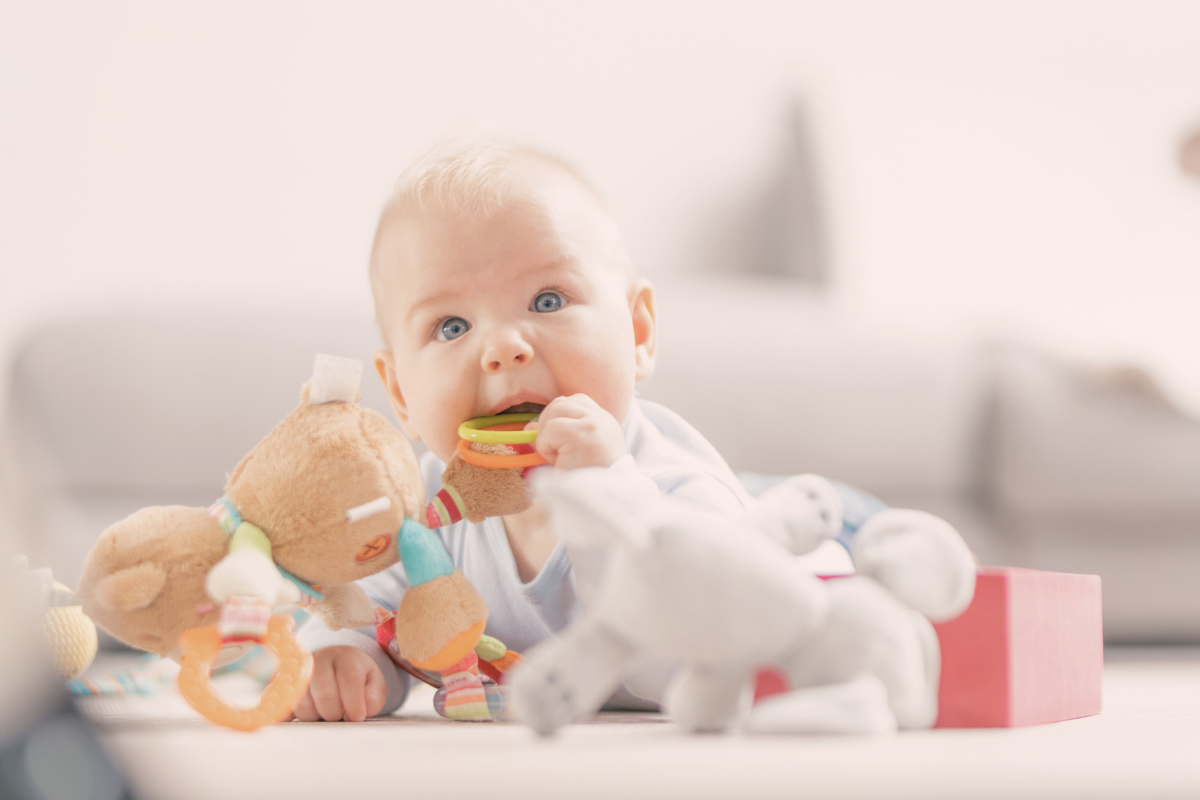
Creating a safe and inviting gender-neutral nursery involves more than just choosing the right paint color. Here are some practical tips to help you with painting and decorating your baby nursery.
Safe and Non-Toxic Paint Options
When painting a baby's room, safety should take top priority.
Opt for safe, non-toxic paints to ensure a healthy environment. Look for zero-VOC (Volatile Organic Compounds) paints, as these emit fewer harmful chemicals compared to traditional paints.
Brands like Sherwin Williams and Benjamin Moore offer a range of zero-VOC paints that are perfect for nurseries. Low-VOC used to be enough, but studies have shown that low-VOC paint colors may still not be low enough, especially for babies.
Zero-VOC paints, on the other, are not only safer but also help in maintaining better air quality, which is crucial for your baby's health.
Texture and Patterns
Adding interesting decorations can bring depth and personality to a nursery. They won't just make the room more inviting but also stimulate your baby’s senses and curiosity.
One example is using an accent wall with playful patterns. Textiles can have stripes, polka dots, or chevrons to visual interest without overwhelming the space. Other possible decorations include soft fabrics for curtains, woven baskets for storage, and wooden accents.
You can also add toys that are not only visually appealing but can also help with your baby's development.
For instance, the Poppyseed Play Wooden Baby Gym keeps babies entertained with its hanging toys. It comes in six different colors, so you can always find something suitable for your baby nursery.
Of course, make sure you have the Poppyseed Play Padded Baby Play Mat so that they won't hurt themselves while playing with the baby gym.
For a splash of color and texture, you can use the Poppyseed Play's Wooden Stepping Stones -- something that your baby is going to love using a year from now.
DIY Tips for Painting a Nursery
Painting a nursery can be a fun and rewarding DIY project. Here are some tips to make the process smoother!
-
Prepare the room. Remove all furniture, cover the floor with a drop cloth, and tape off edges and trim to protect them.
-
Choose the right paint: Select a neutral paint color that fits your vision for the nursery, whether it’s a soft gray, warm beige, or light blue.
-
Prime the walls: Use a primer to ensure even coverage to the paint color and make the final color pop.
-
Paint application: Use a roller for large areas and a brush for edges and corners. Apply at least two coats for a smooth, even finish.
-
Ventilate. Make sure you have good ventilation during and after painting to avoid fumes.
Using Accent Colors with Neutral Colors

Combining neutral paint colors with vibrant accents can significantly benefit your baby's visual development.
Experts highlight the importance of high-contrast color schemes, such as black and white, which are particularly effective for newborns whose eyes are still developing. As infants grow, they begin to distinguish between more colors, especially those that are vivid and contrasting.
To create an engaging environment, consider pairing neutral bases with bold accent colors. Here are some dynamic combinations to try!
-
Beige and light teal. Serene and calming combination.
-
Light gray and soft yellow. This pairing offers a stimulating contrast that is both stylish and beneficial for your baby's eyesight.
-
Pale yellow and light purple. This is a playful yet striking combination.
-
Light blue and light orange. Balanced yet colorful enough, suitable for a modern nursery.
-
Light green and pale pink. A fresh combination. Those who want a more traditional boy nursery can limit the pink to just accents.
-
Black and white. A timeless choice that provides stark contrast, but might be too harsh for some kids as they get older.
Conclusion
Gender-neutral colors offer numerous benefits for your baby's nursery, creating a serene and versatile environment that promotes healthy development.
By choosing colors that reflect your personal style, you can design a space that feels both unique and welcoming. The right color palette can nurture your baby's emotional well-being and foster a sense of security and comfort.
Whether you opt for soft grays, gentle greens, or warm beiges, these colors will help create a nurturing and stylish sanctuary for your little one!
FAQs
What are gender neutral nursery colors?
Popular neutral paint colors include soft grays, warm beiges, gentle greens, and light blues. These tones are versatile and create a calm, welcoming environment for your baby.
Why should I choose neutral colors for my baby's nursery?
Neutral colors create a calm, versatile backdrop that can grow with your child. They allow flexibility in updating decor without frequent repainting and help maintain a soothing environment.
Can I add color to a neutral nursery?
Yes, adding colorful toys, bedding, and wall art to a neutral baby room provides visual stimulation for your baby, essential for their visual development.
